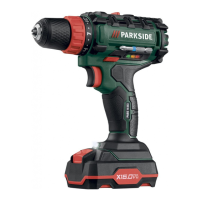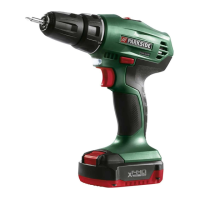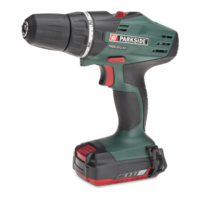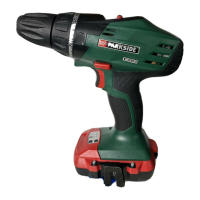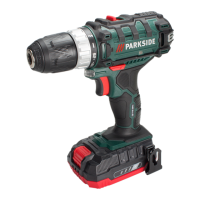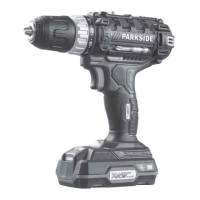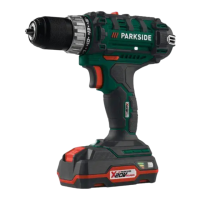8
PABS 16 A1
GB
Tips and tricks
Tip! This symbol indicates proper
behaviour!
♦ Before operation, check whether the screw or
drill bit is correctly positioned, i.e. centred in
the drill chuck.
♦ Screw bits are labelled according to their di-
mensions and their shape. If you are uncertain,
always check whether the bit fits tightly in the
screw head without any free play.
Torque:
♦ Smaller screws/bits can be damaged if you set
the torque or rotational speed too high.
Hard screw joints (in metal):
♦ Particularly high torques occur, for example, in
metal screw joints made using drive sockets.
Select a low rotational speed.
Soft screw joints (e.g. in soft wood):
♦ Here, too, you should use a low rotational
speed, e.g. to avoid damaging the surface of
the wood upon contact with the bolt head.
Use a countersink.
When drilling in wood, metal and other mate-
rials, observe the following:
♦ Use a high speed for drill bits with small diam-
eter and a low speed for drill bits with large
diameter.
♦ Select a low speed for hard materials and a
high speed for soft materials.
♦ Secure or fasten the workpiece in a clamp or
vice (if possible).
♦ Mark the location where you want to drill using
a centre punch or nail. Select a low rotational
speed when starting.
♦ Pull the rotating drill bit from the hole repeatedly
to remove dust and chips and clear the hole.
Drilling in metal:
♦ Use a metal drill (HSS). For optimum results,
you should cool the drill bit with cutting oil.
Metal drill bits can also be used to drill into
plastics. Start with a 3 mm diameter drill bit
and then increase the size until the desired
hole diameter is achieved.
Drilling in wood:
♦ Use a wood drill with a lathe centre; for deep
holes, use an "auger bit"; for large-diameter
holes, use a Forstner bit. Small screws can be
screwed directly into soft wood.
Maintenance and cleaning
WARNING! RISK OF INJURY! Always
switch the appliance off and remove
the battery before carrying out any
work on the appliance.
The cordless screwdriver is maintenance-free.
■ The appliance must always be kept clean, dry
and free from oil or grease.
■ Never allow liquids to get into the appliance.
■ Use a soft, dry cloth to clean the housing.
Never use petrol, solvents or cleansers which
can damage plastic.
■ If a lithium-ion battery is to be stored for an
extended period, the charge level should be
checked regularly. The optimum charge level is
between 50% and 80%. The optimum storage
climate is cool and dry.
NOTE
► Replacement parts not listed (such as carbon
brushes, switch) can be ordered via our
service hotline.
